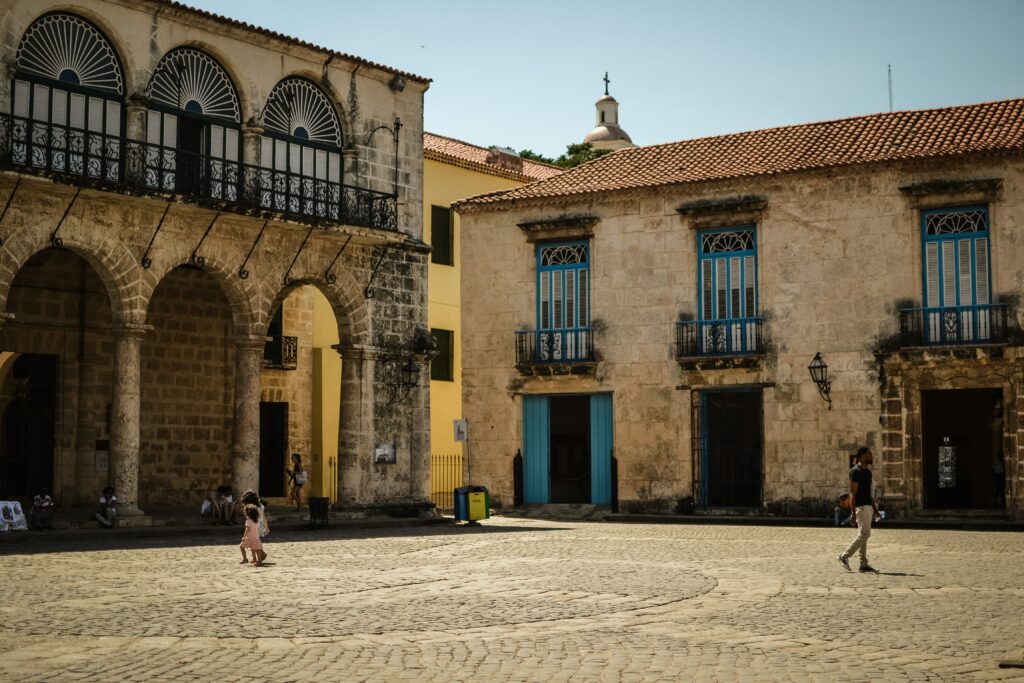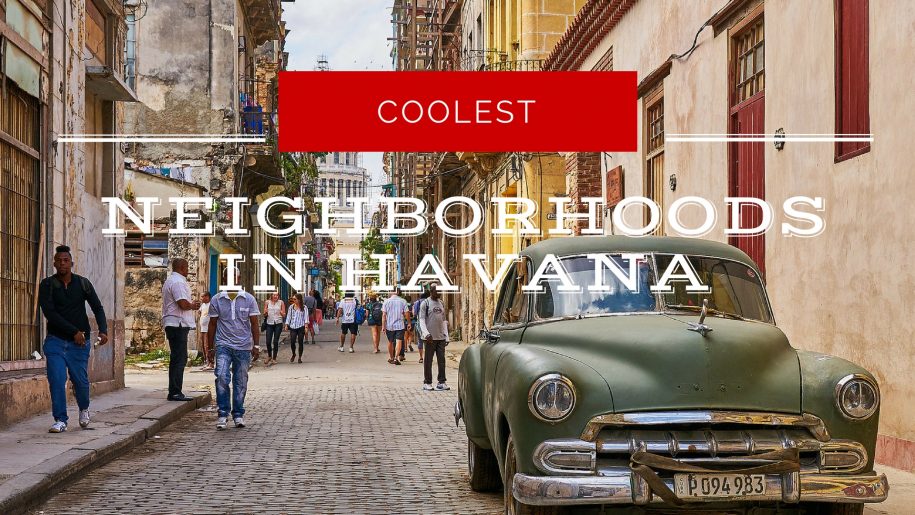The names of the coolest neighborhoods in Havana might not ring any immediate bells. But after reading this we hope they will have permanently etched themselves onto your memory. There’s that smug feeling you’ll get from having discovered the best Mojito in a dive bar in Vedado. So what are some of the coolest neighborhoods in Havana that are just waiting to be explored?
The Heart of the City: Havana’s Old Town

Havana’s tourism sector begins and for some visitors, ends in La Habana Vieja. It was always the heart of the city, and was once the entirety of the city. Like many former colonial outposts, Havana used to be a walled settlement. The massive sturdy walls to kept the citizens safe from hostile foreign forces and pirates.
There are some remains of the city walls left standing, but most of them have been removed. Having made way for the necessary growth of the city as it rapidly expanded beyond its original designated boundaries. Maintenance of the area was not a priority for long time until Eusebio Leal stepped in 1982. He was the ‘saviour of Old Havana’ and got the whole area listed as a UNESCO World Heritage Site.
Much of Cuba’s foreign aid came from the USSR. It was the collapse of the Soviet Union in the late 1980’s that really opened up Cuba’s tourism sector. This allowed for the heart of this beautiful city to be restored maintained to it’s former glory. This is one of the most beautiful neighborhoods in Havana. Definitely one of the coolest parts of Havana to explore.
Where the Money is: Miramar
This is where a number of the wealthier residents of Havana still call home, and the stores along the main street, Quinta Avenida (Fifth Avenue) reflect this. Miramar is also where many of the rapidly growing number of luxury hotels in Havana have set up shop. It might lack the vibrancy of other parts of the city, but Miramar offers an interesting opulence not seen in other neighborhoods in Havana.
Miramar is one of the closest things that Havana has to a diplomatic
quarter, with many embassies being located here. One of the most
prominent is the Russian Embassy (which was briefly the Embassy for the
Soviet Union prior to its collapse). This beautifully brutal building
vaguely resembles a sword stuck into the earth, although some have
remarked that it could be more equated to a syringe.
Where the Cool Kids Play: Vedado
Many visitors to Havana will generally do their wining, dining and partying in Old Havana. A little further down El Malecon is Vedado. An area not so touristy, but more local in feel and where younger Cubans will be more likely to hang out and party. It’s slightly more ramshackle than the restored beauty of the Old Havana or the refinement of Miramar, but what it lacks in aesthetics, it makes up for in attitude and atmosphere.
There are dozens of narrow streets and alleyways full of cool bars and clubs. Havana’s LGBTQ+ scene is also largely to be found around here. It was once a fairly upmarket area. However after the revolution many of the stately homes were abandoned and fell into disrepair. In Vedado a lot of structures are being repurposed as offbeat cool bars, clubs and restaurants. Unsurprisingly it’s now one of the coolest and liveliest neighborhoods in Havana!
Hidden History: Chinatown
Havana’s Chinatown (Barrio Chino de La Habana) is one of the more interesting neighborhoods in Havana. The Chinese population of Cuba rose and then fell in line with the political history of Havana. When slavery was outlawed in 1886, foreign migrants flocked to Cuba in order to make up the shortfall, albeit in a paid capacity. Havana’s Chinatown became the heart of their community, and many restaurants and stores opened to cater to them.
Those who didn’t become Cuban citizens were affected by the Cuban Revolution, when restrictions were imposed on foreigners owning businesses. Many of them opted to leave the country, and the Chinese population fell. Havana’s Chinatown continued to flourish, although at a somewhat reduced rate. It’s now a fascinating glimpse at one of the many cultures that make up contemporary Cuba, and like most Chinatowns, is about the best place in the city to get some awesome Chinese food.
Jaimanitas: Home of Fusterland

Jaimanitas one of the coolest neighborhoods in Havana was originally a little fishing village on Havana’s outskirts. However these days it’s more famous for being the home of Fusterland. Fusterland is an ever evolving art project by Cuban artist José Fuster who relocated to this part of the city in the 1970s to establish a studio. Over time he began to transform the exterior of his studio into a sort of Cuban Sagrada Familia that would have done Gaudi proud! Later on he accepted the invitations of his neighbors to decorate their homes in the same way and now there are entire streets that have been filled with his imaginative artworks. A stroll around this large scale installation and interacting with the numerous childlike sculptures and street art is an experience unlike any other.
